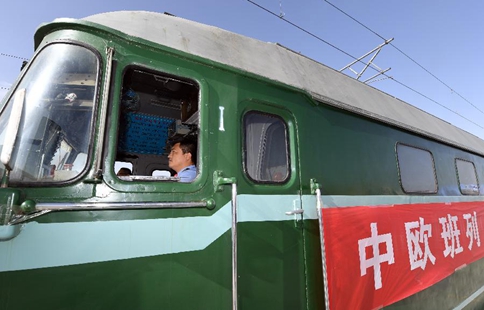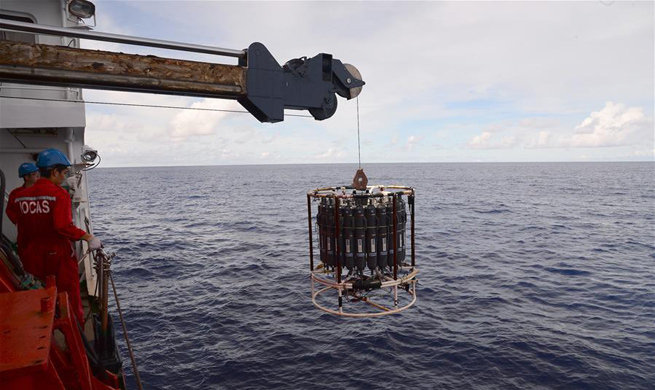by Ejidiah Wangui
NAIROBI, Aug. 20 (Xinhua) -- John Kamau admired a photo of his wife that he captured on a sandy beach in the coastal city of Mombasa where he took her to enjoy a break from the daily grind.
The retired Kenyan teacher and a father of five had made the solemn promise to treat his wife for a beach holiday three years ago.
A lover of history and literature, Kamau knew their maiden visit to the country's top tourist destination would be realized through the Standard Gauge Railway (SGR) which was still under construction.
So when President Uhuru Kenyatta launched the SGR train on May 31, Kamau asked his wife to pack their bags and head to the coast.
The couple was among the first Kenyans to ride on the modern train which was baptized Madaraka Express.
Kamau told Xinhua during an interview that the four-hour journey from the train's terminal in Nairobi to Mombasa will forever be etched in his memory.
Having taught and read about the establishment of the railway line in history books, Kamau said his wait for the SGR ride to the coast was worth it.
"It was such a great experience. I am proud that finally I fulfilled my wife's dream," said Kamau. "It has always been our wish to visit Mombasa but the eight-hour grueling journey by bus made us postpone this visit for so many times."
"Going by air was never an option, since we couldn't afford. SGR is the best thing that ever happened to this country. It provides a great experience to travelers like me whose encounter with trains was only in the books," He added.
Kamau, who has become a celebrity in his sleepy village in Kiambu County, plans to relive the experience next year in May when he celebrates his 60th birthday.
As for for Joseph Masoo, a journalist based in Nairobi, SGR has made his trips to Mombasa every weekend where his family lives less tedious.
"My wife works at a hotel in South Coast and since we have three little children, she has to stay with them. I used to visit them every two weeks but now I manage to go every weekend since it takes four hours only," said Masoo. "Initially I could spend close to 15 hours on the road from Nairobi and back."
The veteran scribe is also happy that he can now spend more hours with his family unlike before when the bulk of his free time was spent on the road.
"Due to the nature of my work, sometimes it can be tiring as we are always on the go. SGR has come to the rescue of so many other Kenyans like me who have to travel to the coast frequently," Masoo said.
"This is something every Kenyan should be proud of," he said.
For the many Kenyans who had a chance to ride on the post-colonial train as well as the infamous Lunatic express, the experience is totally different.
The Madaraka Express has always guaranteed comfort as well as security to Kenyans travelling to Mombasa yet it costs less than road and air transport.
Both Kamau and Kariuki said the Madaraka Express has made a remarkable difference in their lives.
"You hardly notice the train is moving at 120 km per hour until you get to the parts of the journey where the train is running parallel to road traffic. When we took off I also didn't realize we were moving," noted Kamau.
Save for the absence of wireless internet connection inside the train, Kenyans admire its beautiful exterior and interior features.
Thousands of photos posted on social media platforms for Kenyans who have been at the train's terminus in Nairobi and Mombasa tell the whole story.
The SGR, which connects the port city of Mombasa to Kenya's capital Nairobi, replaced the parallel meter-gauge railway that was originally built by British colonialists in the 19th century.
Under the East African Railway Master Plan, the Mombasa-Nairobi SGR will eventually link up with other standard gauge railways that are being constructed across the region.
Construction of the Second Phase of the SGR that links Nairobi to Naivasha is underway. The China-funded modern railway network is expected to transform regional economies through improved trade alongside industrial progress.

















